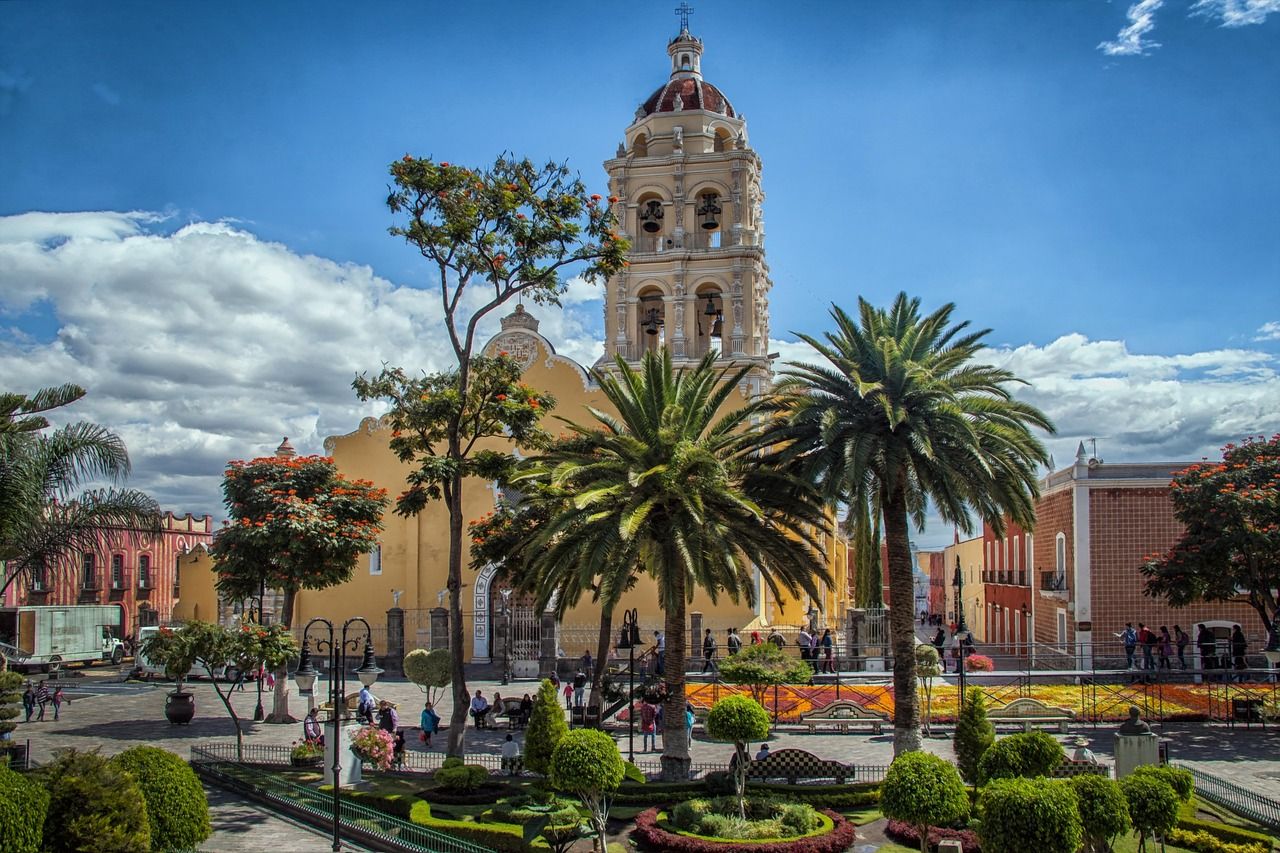
푸에블라 소개
멕시코 이스트 중앙에 위치한 푸에블라는 문화 경험과 자연스러운 불가사의를 찾는 방문객들에게 다양한 명소를 제공합니다. 푸에블라는 스페인 식민지 시대로 거슬러 올라가는 풍부한 역사와 문화 유산으로 주로 알려진 푸에블라 시티와 같은 번화 한 도시로 가장 잘 알려져 있습니다. 푸에블라 시티 (Puebla‘ target=’_blank’ rel=’noopener noreferrer’ title=’Puebla에 대한 위키백과 정보’>Puebla City)와 같은 활기찬 축제, Quetzalcoatl의 의식 (특히 Huaquechula에서) 및 카니발 (특히 Huaquechula). 또한 방문객들은 Nahuas, Totonacs, Mixtecs, Popolocas 및 Otomi의 5 가지 주요 원주민 그룹을 탐색 할 수 있습니다.
주요 명소 및 관심 지점
푸에블라는 방문객들이 탐험 할 수있는 다양한 명소를 제공합니다. 그중에는 다음과 같은 주요 요점이 있습니다.
# 푸에블라시의 교회 : 건축 경이로움
스페인 식민지의 영향은 푸에블라 시티 전역에서 분명합니다. 푸에블라 시티는 산 투아 리오 델 소 코로 (Santuario del Socorro)와 니 에스트라 세뇨라 데 라스 캘리포니아 y Sanación과 같은 인상적인 교회를 자랑합니다. 이 건축 걸작은 방문객들에게 지역 역사에 대해 배우면서 자신의 아름다움에 감탄할 수있는 기회를 제공합니다.
# 천연 불가사의 : 푸에블라 시티의 수력 발전소
푸에블라는 또한 탐험 할 가치가있는 수력 발전소와 같은 자연적인 경이로움을 제공합니다. 방문객들은 지속 가능한 에너지 생산에 대해 더 많이 배울 수 있으며 이러한 설치에서 달성 한 기술 발전에 감탄할 수 있습니다.
문화 및 역사적 맥락
푸에블라의 기원은 수도 도시에 있으며, 1531 년이 계곡에 스페인 식민지 주민들이 설립하여 멕시코 시티와 베라 크루즈 항구 사이의 무역 경로를 확보했습니다. 이 역사는이 지역을 오늘날의 상황으로 형성했습니다. 푸에블라시와 푸에블라 주 내의 다른 도시에서 볼 수있는 식민지 영향을 가진 토착 문화의 혼합.
방문자를위한 실용 정보
실용적인 조언을 구하는 방문객의 경우,이 지역으로의 여행을 계획 할 때 날씨/계절과 같은 고려 사항을 염두에 두어야합니다. 방문하기 가장 좋은 시간은 4 월에서 6 월 사이, 온도가 섭씨 18-25도 범위에서 봄철에 있습니다. 이를 통해 관광객들은 극도의 열이나 추위를 경험하지 않고 푸에블라의 도시를 탐험 할 수 있습니다. 또한 방문객들은 멕시코 문화가 시간 엄수를 가치가 있음을 알고 있어야합니다. 그러나 교통 문제로 인해 늦게 도착하면 일반적으로 용서합니다.
결론 : 푸에블라가 방문 할 가치가있는 이유
푸에블라는 관광객들에게 Cinco de Mayo, Quetzalcoatl의 의식, Day of the Dead Celebrations (특히 Huaquechula) 및 카니발 (특히 Huejotzingo)과 같은 활기찬 축제와 함께 다양한 문화 경험과 자연의 경이로움을 제공합니다. 방문객들은 푸에블라의 역사를 탐구하면서 식민지의 영향과 혼합 된 토착 문화에 대해 배울 수 있습니다. 수력 발전소와 함께 교회와 같은 건축 마블이 혼합되어 있기 때문에 방문객 들이이 매혹적인 목적지를 방문 해야하는 많은 이유가 있습니다.
정보 출처: Puebla Wikipedia
View Original English Content
Introduction to Puebla
Puebla, located in east-central Mexico, offers a diverse range of attractions for visitors seeking both cultural experiences and natural wonders. Known primarily for its rich history and heritage dating back to Spanish colonial times, Puebla is best known for its bustling cities such as Puebla City, which offer vibrant festivals like Cinco de Mayo, Ritual of Quetzalcoatl, Day of the Dead celebrations (especially in Huaquechula) and Carnival (especially in Huejotzingo). Additionally, visitors can explore five major indigenous groups: Nahuas, Totonacs, Mixtecs, Popolocas, and Otomi.
Key Attractions and Points of Interest
Puebla offers a range of attractions for visitors to explore. Among these are the following key points:
# Churches in Puebla City: Architectural marvels
The Spanish colonial influence is evident throughout Puebla City, which boasts impressive churches such as Santuario del Socorro and Nuestra Señora de las Californias y Sanación. These architectural masterpieces offer visitors a chance to admire their beauty while learning about local history.
# Natural Wonders: Hydroelectric plant in Puebla City
Puebla also offers natural wonders, such as hydroelectric plants that are worth exploring. Visitors can learn more about sustainable energy production and marvel at the technological advances achieved by these installations.
Cultural and Historical Context
The origins of Puebla lie in its capital city, which was founded by Spanish colonizers in this valley back in 1531 to secure trade routes between Mexico City and Veracruz’s port. This history has shaped the area into what it is today – a mix of indigenous culture with colonial influences that can be seen throughout Puebla City and other cities within Puebla State.
Practical Information for Visitors
For visitors seeking practical advice, considerations such as weather/seasons are essential to bear in mind when planning trips to this region: The best time to visit is between April and June, during springtime when temperatures range from 18-25 degrees Celsius. This allows tourists to explore Puebla’s cities without experiencing extreme heat or cold. Additionally, visitors should be aware that Mexican culture values punctuality; however, they are generally forgiving if you arrive late due to traffic issues.
Conclusion: Why Puebla is Worth a Visit
Puebla offers tourists an array of cultural experiences and natural wonders combined with vibrant festivals such as Cinco de Mayo, Ritual of Quetzalcoatl, Day of the Dead celebrations (especially in Huaquechula) and Carnival (especially in Huejotzingo). Visitors can explore Puebla’s history while learning about indigenous culture mixed with colonial influences. With its blend of architectural marvels like churches along with hydroelectric plants, there are plenty of reasons why visitors should choose to visit this fascinating destination.

답글 남기기